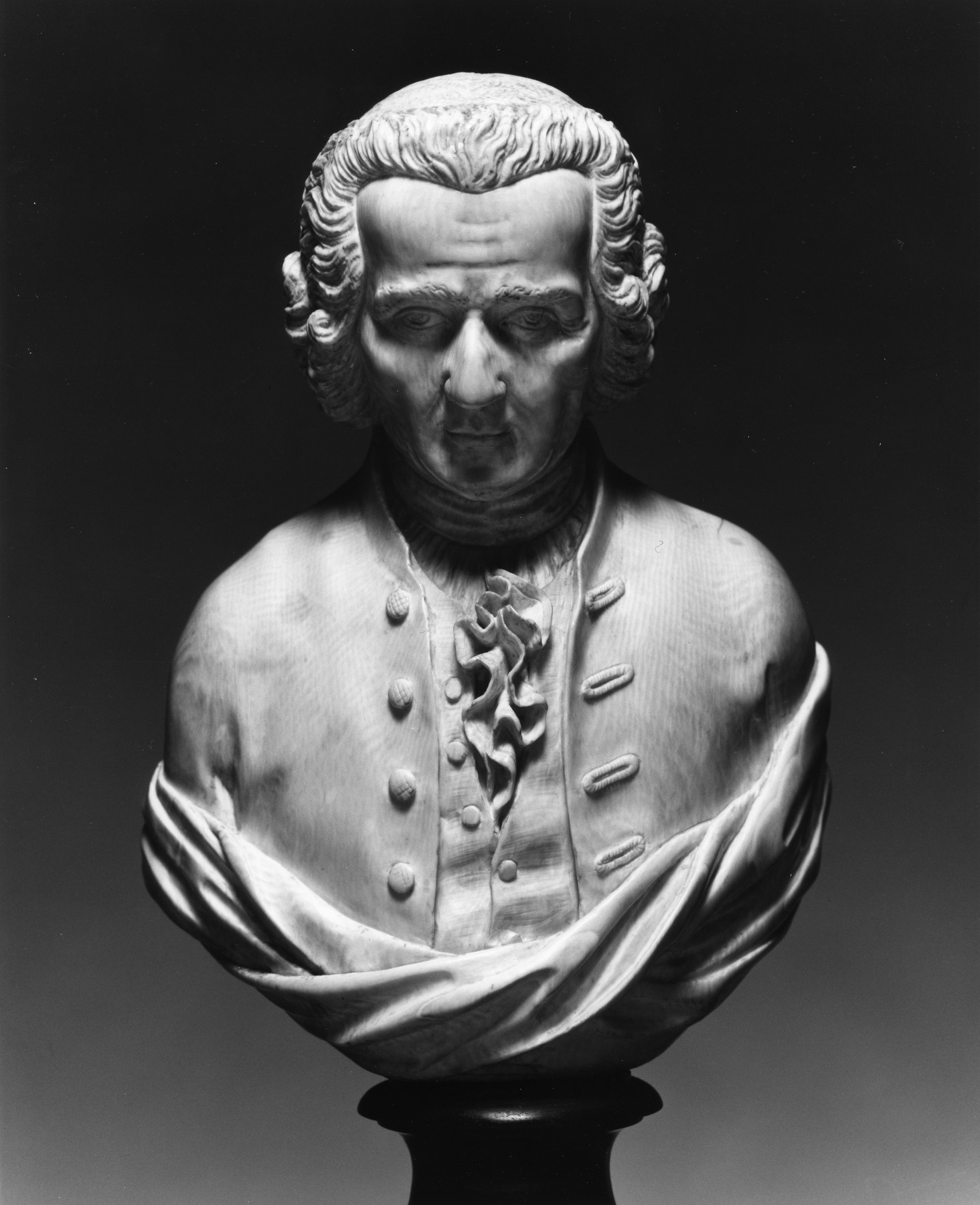Voltaire
(18th and 19th Centuries )
Voltaire is represented as an elderly man wearing a wig with curled ends, a ruffled shirt, a coat edged with fur and trimmed with lace frogs, and a mantle twisted around his back and chest. The bust is mounted on an ebonized wood socle.
This representation of the French philosopher, along with a similar bust of Rousseau (Walters 71.365) has been attributed to a member of the Rosset family of Saint-Claude. The town, long famous for its "tabletterie," or work in rare woods and exotic materials, is situatied at the confluence of the Bienne and Tacon rivers in the Jura mountains, fifteen miles from Voltaire's residence at Ferney. Of the principal sculptor in the Rosset family, Joseph (Jean-Claude-François-Joseph), the marquis de Villette wrote: "Captivated by the good will of the artist, Voltaire received him at Ferney, and I witnessed the ingenuousness with which he removed his periwig, while he played chess, and bowed his head."
Rosset specialized in small-scale sculpture in various mediums and was noted for his representaitons of Voltaire. In 1779, at the Salon de la Correspondance in Paris, Rosset exhibited a relief showing the philosopher seated at the foot of a tree holding a book and sheltering a poor family with his arms.
In 1771 Rosset settled in Paris, where he specialized in busts of Voltaire and other celebrated personages including Rousseau, Montesquieu, and d'Alembert. Three of Rosset's four sons followed their father in the profession, and one, Claude-Antoine, is remembered for a statuette of Rousseau exhbitied at the Louvre in 1793.
Provenance
Provenance (from the French provenir, 'to come from/forth') is the chronology of the ownership, custody, or location of a historical object. Learn more about provenance at the Walters.
William T. / Henry Walters Collection, Baltimore, by purchase; Walters Art Museum, 1931, by bequest.
Conservation
| Date | Description | Narrative |
|---|---|---|
| 1/11/1962 | Treatment | cleaned |
Geographies
France, Saint-Claude (Place of Origin)
Measurements
H: 5 3/8 in. (13.7 cm); H: with base: 6 3/4 in. (17.2 cm)
Credit Line
Acquired by William T. or Henry Walters
Location in Museum
Not on view
Accession Number
In libraries, galleries, museums, and archives, an accession number is a unique identifier assigned to each object in the collection.
In libraries, galleries, museums, and archives, an accession number is a unique identifier assigned to each object in the collection.
71.364



